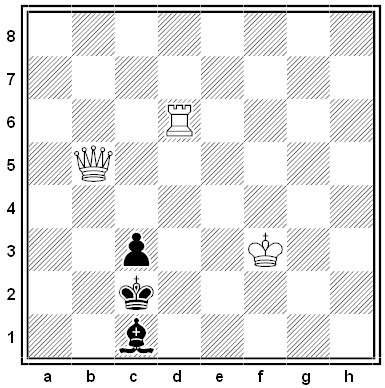Antipodes
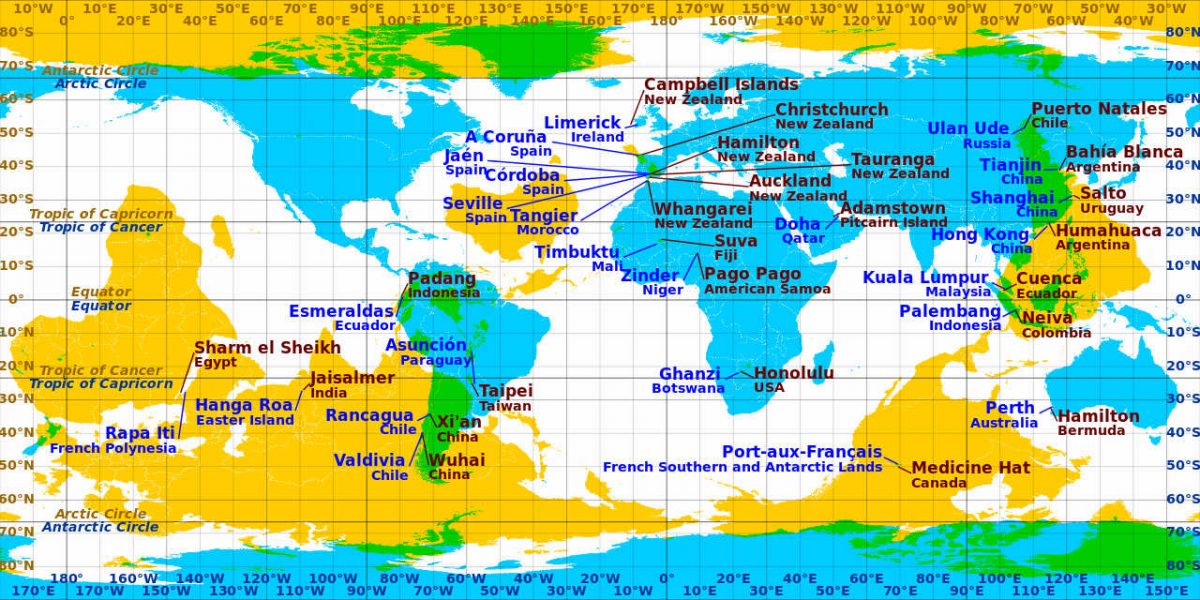
It used to be said that the sun never set on the British Empire; it still doesn’t set on the Commonwealth of Nations, as Gibraltar is on the opposite side of the earth from New Zealand’s Te Arai Beach.
At their height, the sun didn’t set on the French Empire, the Dutch Empire, or the Spanish Empire, either. New Caledonia, an overseas territory of France, is opposite Mauritania, once part of French West Africa. Parts of Suriname, a former Dutch colony, are opposite the Indonesian island Sulawesi, once part of the Netherlands East Indies. And Luzon, the largest island of the Philippines, is opposite eastern Bolivia; both were once controlled by Spain.
The Pacific Ocean is so large that it stretches more than halfway around the world — parts of the ocean are on opposite sides of the earth.
Sylver Coinage
This curious game was invented by Princeton mathematician John H. Conway. Two players take turns naming positive integers, but an integer is off limits if it’s the sum of nonnegative multiples of integers that have already been named. Once 1 is named, everything is off limits (because any positive integer is a sum of 1s), so that ends the game; the player who is forced to name 1 is the loser. An example gives the idea:
- I start by naming 5. From now on neither of us can name 5, 10, 15, 20, …
- You name 4. Now neither of us can name a number built of 5s and 4s, that is, 4, 5, 8, 9, 10, or any number greater than 11.
- I name 11. This reduces the list of available numbers to 1, 2, 3, 6, and 7.
- You name 6. Now we’re down to 1, 2, 3, and 7.
- I name 7. Only 1, 2, and 3 are still available to name.
Now we’ll use our next turns to name 2 and 3, and you’ll be forced to name 1, losing the game.
Though the game is very easy to understand, it’s still full of mysteries. For example, R.L. Hutchings has shown that playing a prime number as the first move guarantees that a winning strategy exists, but no one has figured out how to find the strategy. And no one knows whether there are any winning opening moves at all that aren’t prime.
More on the Sylver Coinage page.
Perspective
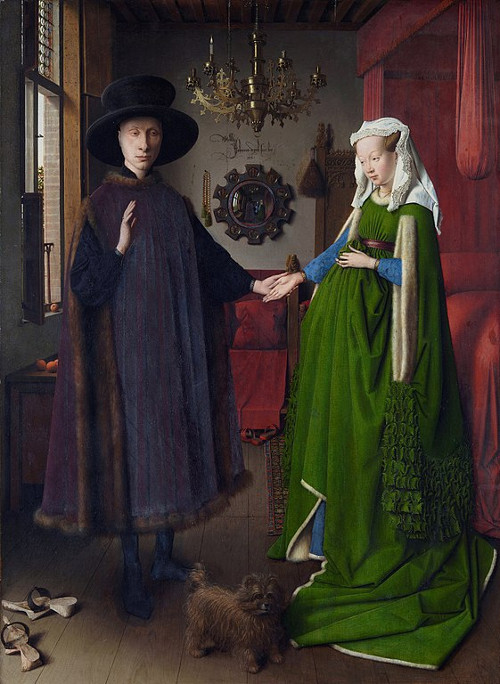
There’s an interesting detail in Jan van Eyck’s Arnolfini Portrait of 1434. The painting depicts Italian merchant Giovanni di Nicolao Arnolfini and his wife in their home in Bruges. In the background is a convex mirror over which is inscribed the legend “Johannes de eyck fuit hic 1434” (“Jan van Eyck was here 1434”). And curiously, reflected in the mirror, where we’d expect to see the painter and his easel, are two figures:
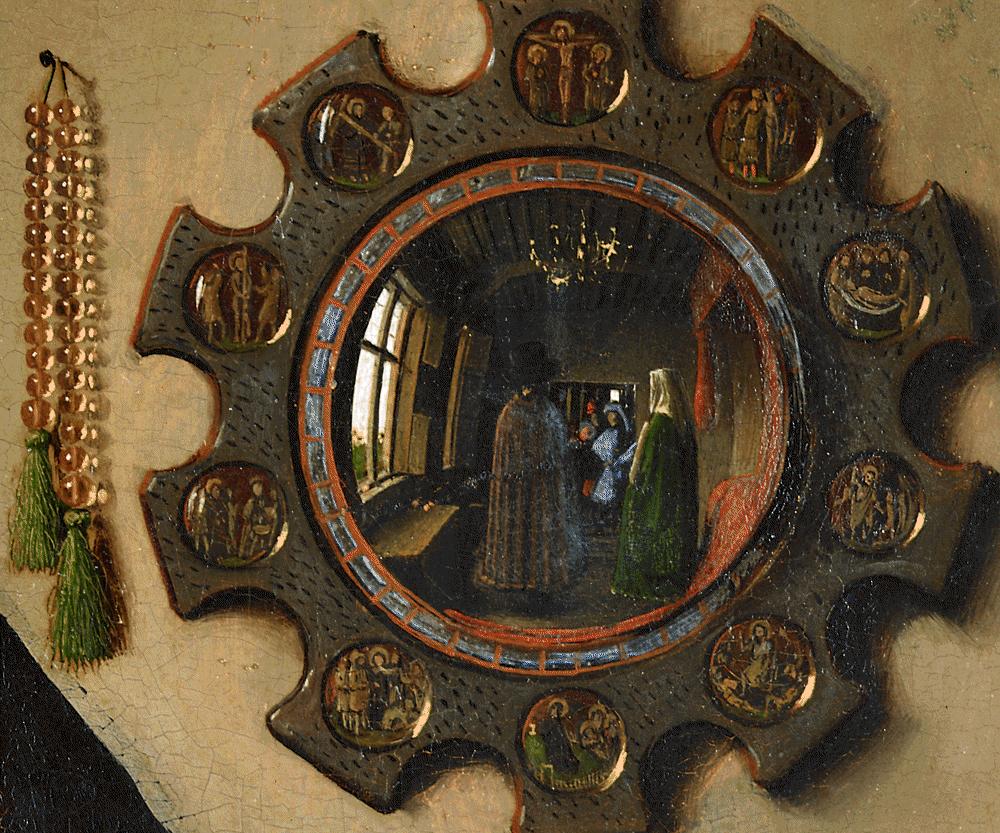
In 1934 art historian Erwin Panofsky offered a unique explanation for this: The painting is an “artistic marriage certificate.” Neither Arnolfini nor his new wife had any relatives at Bruges at the time of their marriage, and the custom at the time was to record two witnesses to the wedding. “So that we can understand the original idea of a picture which was a memorial portrait and a document at the same time, and in which a well-known gentleman-painter signed his name both as artist and as witness.”
Amused by the reflection, Hungarian graphic designer István Orosz set up his own arrangement in his 1997 etching Johannes de Eyck fuit hic, below. “Here I attempt to show the world behind the door with the help of two mirrors.”
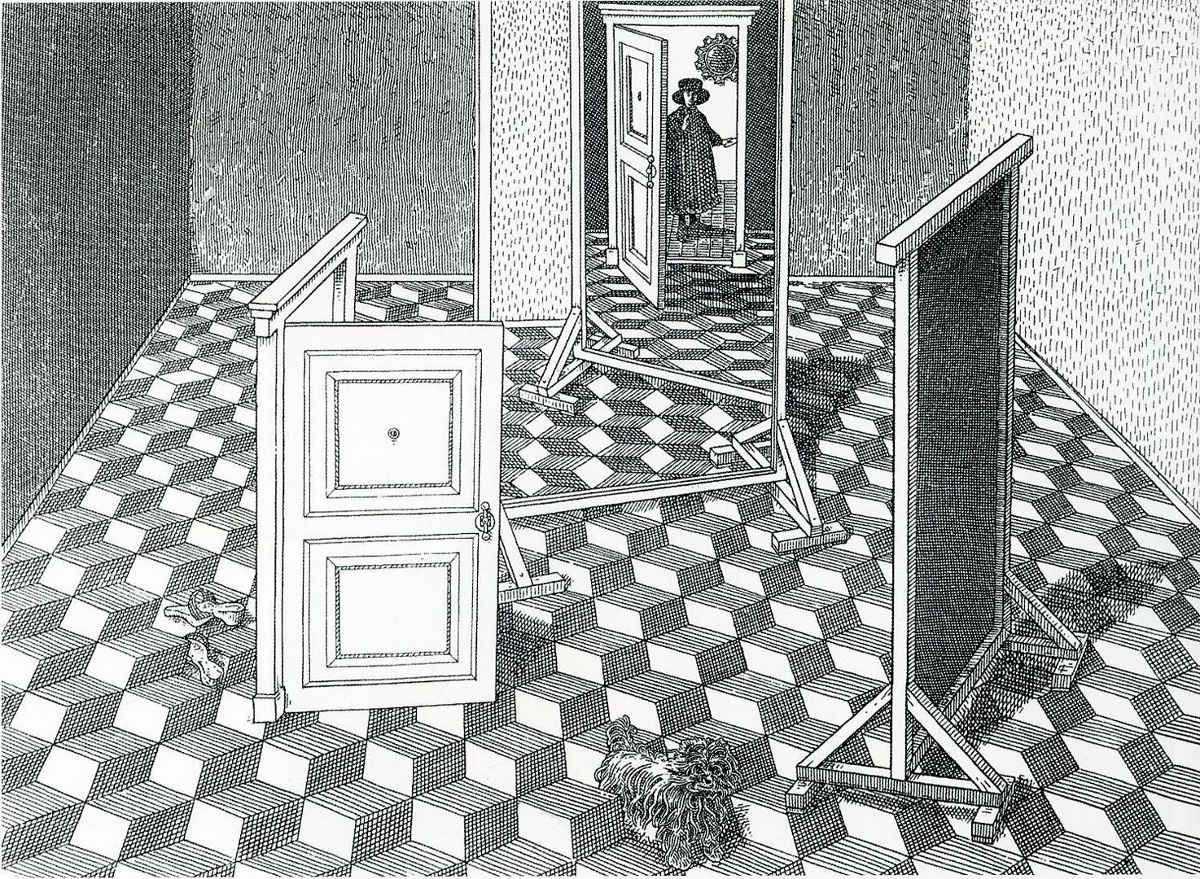
For a thousand bucks you can buy your own Van Eyck mirror and investigate for yourself.
(Erwin Panofsky, “Jan van Eyck’s Arnolfini Portrait,” Burlington Magazine for Connoisseurs 64:372 [March 1934], 117-119.)
His and Hers
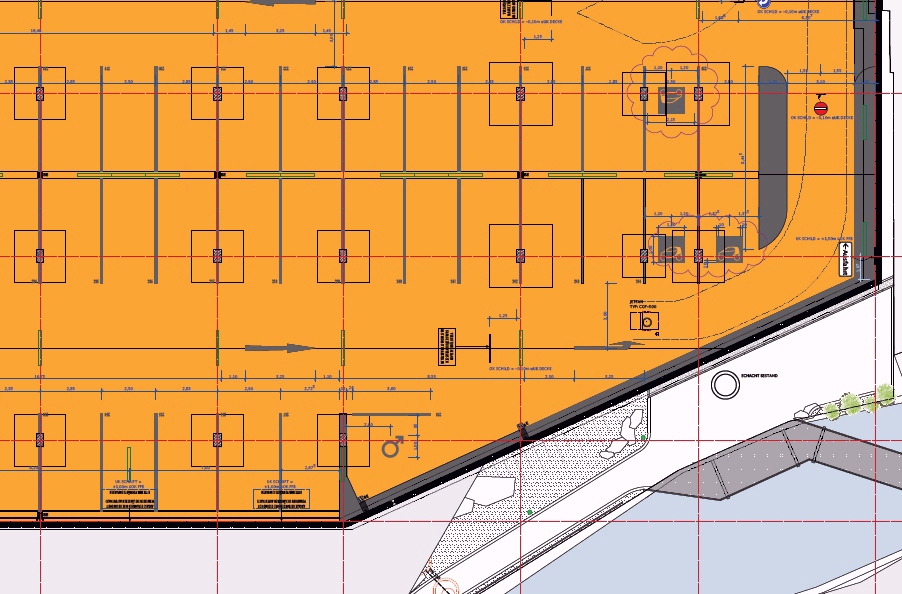
When Triberg, Germany, unveiled a new parking garage in 2012, it included 12 parking spaces designated for women’s use, as has been required by German law since the 1990s. The spaces are somewhat larger than normal and located near the mall entrance, to reduce the possibility of sexual assault.
Due to the Triberg mall’s shape, it also has one space on each level that requires a complex parking maneuver. Mayor Gallus Strobel decided to designate these for men … which brought on a backlash from people who felt that it insults women’s parking skills.
“It’s a joke,” Strobel told ABC. “Everyone in Triberg thinks it is a joke. We looked at the two parking spaces and we said, ‘They could be dangerous for your car,’ so at the same time, we decided to make them for men, and then give 12 others for women.”
Is this sexist? Considerate? Unnecessary? Germany isn’t the only nation that uses women’s parking spaces — they’ve also been introduced in Austria, Switzerland, and China, where the spokesman for one northern mall told AFP, “The fact that our women’s parking spaces are wider is simply due to practical reasons and shouldn’t imply that women are worse at driving than men.”
For his part, Strobel seems to have his eye on the bottom line — after Triberg controversy made the news, the town’s tourist traffic increased from 250,000 to 400,000. “Women can come here and prove me wrong,” he told the Times of India, “and while they’re at it, they can see the town’s attractions.”
Turnabout
Here’s an especially vivid example of the illusion created by Dick Termes’ six-point perspective.
If you can convince yourself that the front half of this sphere is transparent, and that the image is painted on the interior of the back half, you’ll find that you’re inside the cage, turning to your left, while the birds are outside the cage, looking in at you. (To get started, I find it helps to focus on an edge of the sphere, rather than the center.)
There are many more examples on Termes’ YouTube channel.
The Bear Gates
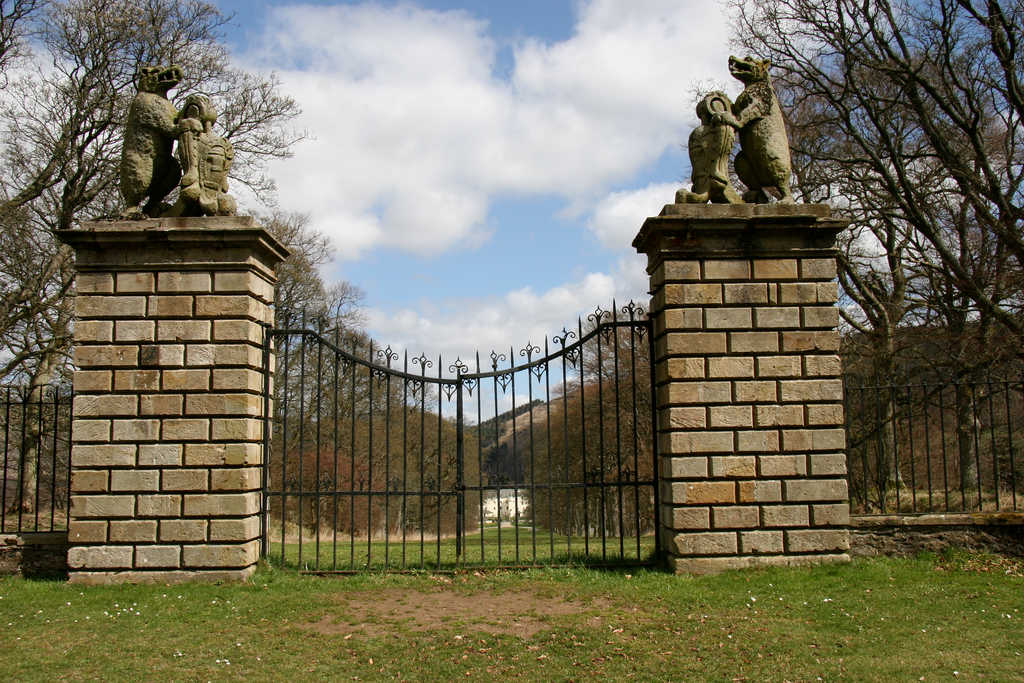
These gates, at the main entrance to the grounds of Scotland’s Traquair House, were installed in 1738.
After a visit by Bonnie Prince Charlie in 1745, earl Charles Stuart vowed they would never open again until a Stuart king returned to the throne.
They never have.
“Mother Nature in Tears”
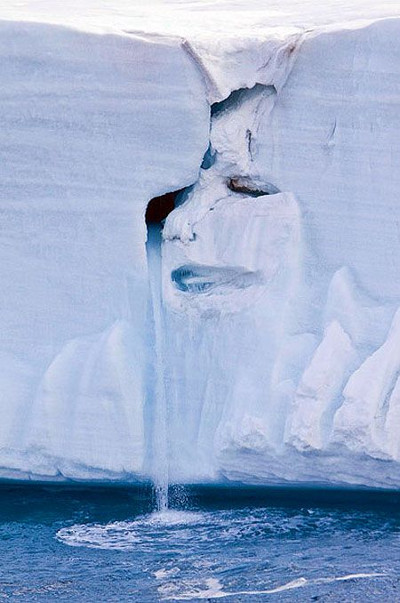
Photographer Michael S. Nolan took this photo in 2009 at the Austfonna ice cap in Norway’s Svalbard archipelago. He writes:
When I took the image early in the morning on July 16, 2009 from the bow of the National Geographic Explorer I was struck by the unmistakable likeness of the face of a woman crying. In fact once my mind locked onto the face it was hard to see any other pattern in the ice cap. I was moved to photograph this particular waterfall several different ways with a couple of different lenses. It was one of the best examples of a human likeness I have ever witnessed in nature.
“The icescape changes every year I visit,” he told the Telegraph. “Every summer the route has less ice as the polar cap retreats.”
(Via Brad Honeycutt, The Art of Deception, 2014.)
The Last Detail
Podcast Episode 164: Vigil on the Ice

In 1930, British explorer Augustine Courtauld volunteered to spend the winter alone on the Greenland ice cap, manning a remote weather station. As the snow gradually buried his hut and his supplies steadily dwindled, his relief party failed to arrive. In this week’s episode of the Futility Closet podcast we’ll follow Courtauld’s increasingly desperate vigil on the ice.
We’ll also retreat toward George III and puzzle over some unexpected evidence.

